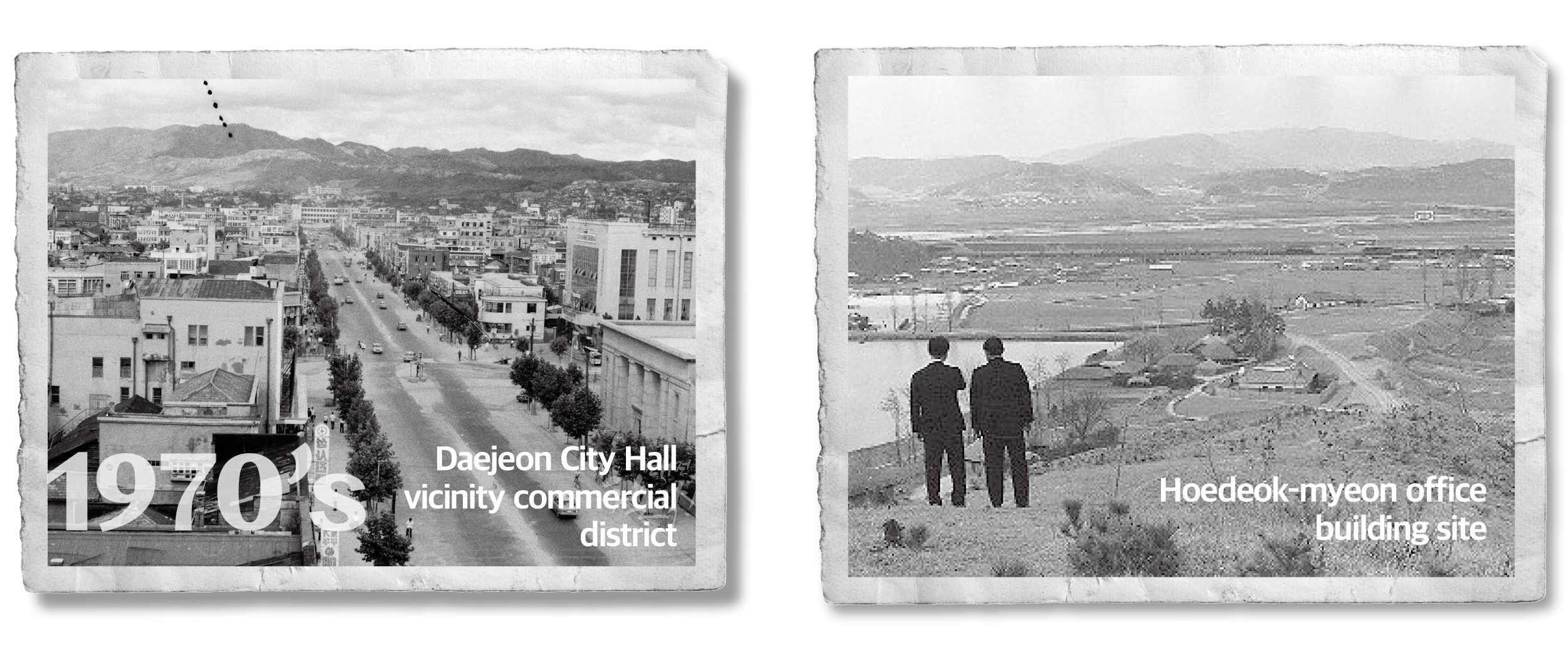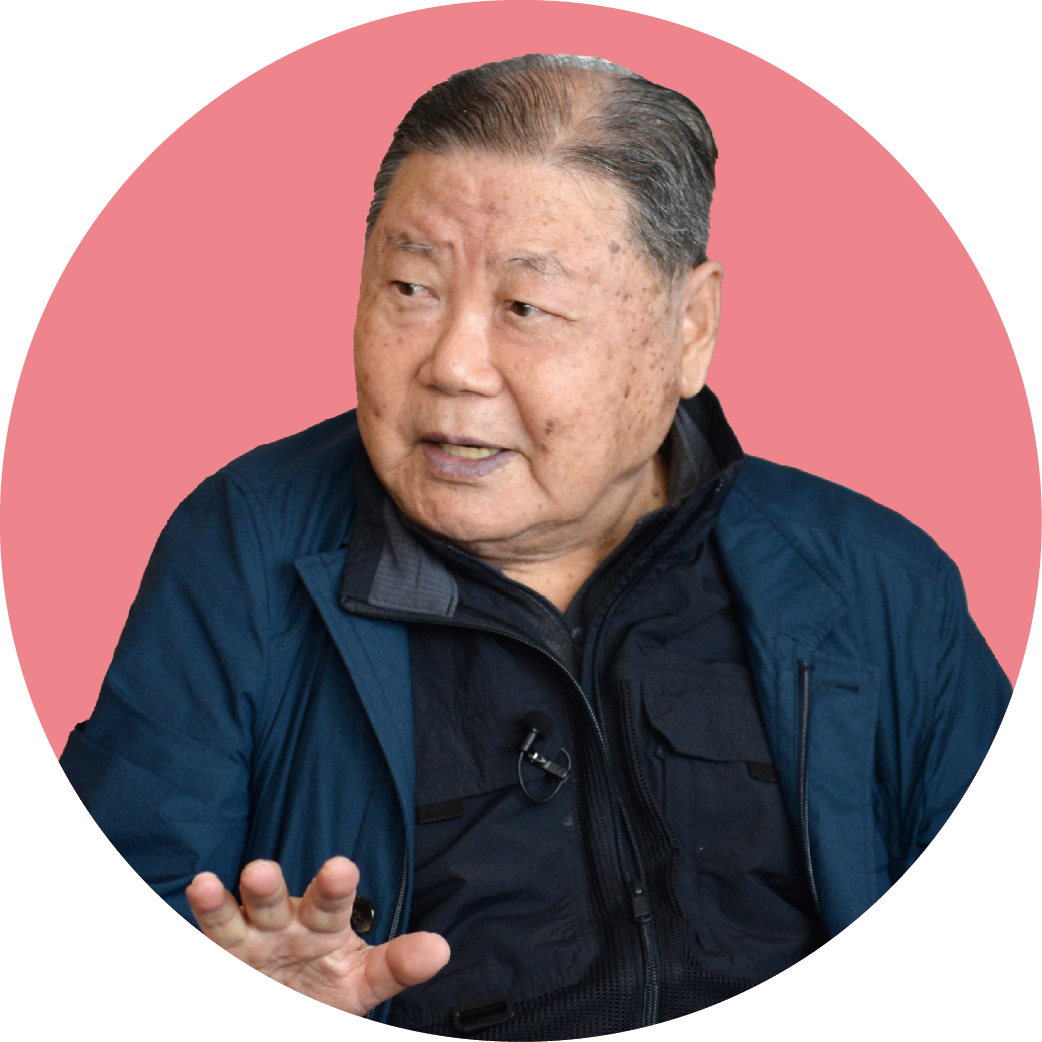K-water story
A Special Series Dedicated to the 50th Anniversary of K-water’s HQ Relocation to Daejeon
K-water Connects to Daejeon through Perseverance
Why Daedeok-gun? There were three reasons. First, the government had to avoid any possible regional conflicts resulting from the cancellation of K-water’s relocation to Daegu. Second, Daejeon is located at the center of the country, which makes it easy for K-water to connect to its branches and facilities across the country. Third, Daedeok is easily accessible from a major highway.
Text by Jae-hyeon Park of the Public Relations Department
Photos by Mun-pil Jaegal of the Public Relations Department

Failure to Move into Gyeongam Building, a Major Landmark in Daejeon
The relocation of its headquarters by K-water to Daejeon shows the irony of Korean history. K-water successfully built Korea’s water resources infrastructure including Soyanggang Dam, contributing significantly to the miracle of Hangang River, which in turn led to the overpopulation of Seoul. In short, K-water was the architect of its own problem. The government started to implement population decentralization policies and, as a result, K-water was forced to leave Seoul where real estate prices would continue to soar in the following decades.
The new location of its headquarters was in Hoideok-myeon, Daedeok-gun, Chungnam Province (currently Yeonchuk-dong, Daedeok-gu, Daejeon Metropolitan City). Back then, Hoideok-myeon, which was far from downtown Daejeon, consisted mostly of empty fields. Initially, K-water did not intend to move its headquarters to the suburbs. There were twists and turns until K-water finally ended up settling in Hoideok.
The first candidate location was Gyeongam Building near Daejeon City Hall. The 10-story building built in 1970 was the tallest in Daejeon. But efforts to move into the building ended up in vain. The building quickly emerged as a popular landmark in Daejeon, leaving no space available for rent as major organizations including Korea Minting and Security Printing Corporation started to move in.
Moving to Hoideok-myeon instead of downtown Daejeon was a strategic decision to ease the political burden inevitably associated with going back on the previous choice of Daegu. After all things considered, Hoideok-myeon, Daedeok-gun, Chungnam Province was finally decided as the new HQ location.

The New HQ Building Faces South for the President to Get a Better View of It
K-water was, for the most part, forced to move out of Seoul, but there were some upsides to moving to Hoideok-myeon as well. Hoideok-myeon was a hub of transportation that can easily connect to the rest of the country. Since K-water was managing state projects across the country, it was crucial for HQ and its branches to communicate and collaborate closely and effectively. The close proximity to the Gyeongbu (Seoul-Busan) Line and highways was a huge geographical advantage. By relocating to Hoideok-myeon, K-water branches across the country were brought closer time- and space-wise.
Construction of the new HQ building began on December 31, 1973. From the new building, cars were seen running south to north on the highway. The building was originally designed to face west, but President Ahn ordered it to face south so that he and other K-water employees could see the traffic on the highway at a glance from the building. Ahn was so pleased to be able to see the real-time freight traffic on Gyeongbu Expressway and Honam Expressway, a crucial indicator of the Korean economy. He even had a giant billboard advertising the company set up, hoping that President Park would be able to see the K-water headquarters whenever he took the highways.



The Teary Ground-Breaking Ceremony Made Possible with a Personal Loan Taken out by an Employee

There is an interesting story about the relocation of the headquarters. The site for the new building was selected, but K-water did not have enough money for the downpayment for the contract. Land owners demanded that the contract be signed before the construction started. The farmers who owned the land insisted that if the land sale contract would fall through, they would have to go ahead and start working the land. K-water was not able to take out a loan immediately. The director of the General Affairs Division asked Dong-gwan Park, manager of the division, to get the money. Park said yes without questioning the validity of the request. Looking back on the past, he said,
Ten months after the ground-breaking ceremony was held with a personal loan taken out on Park’s own house, the new building was finally completed on October 15, 1974.


